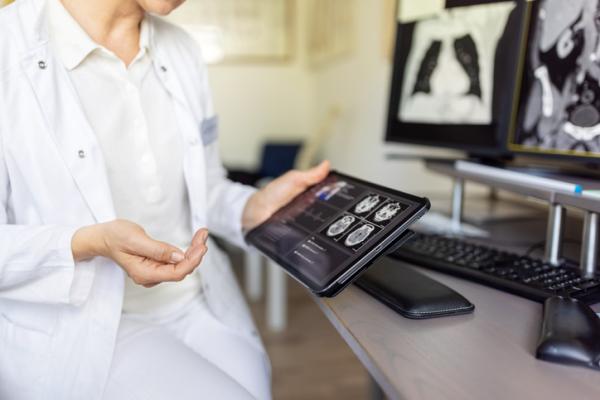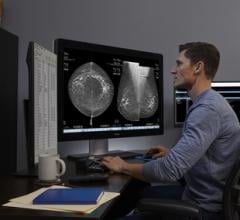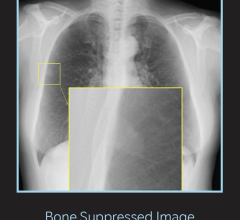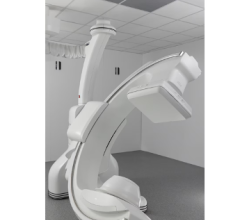
Getty Images
August 21, 2023 — Americans have gotten at least 12 million more years of life to live because of preventive cancer screenings they’ve gotten the past 25 years, a new study estimates.
That adds up to at least $6.5 trillion in added economic impact, because of scans and tests that look for early signs of breast, colon, cervical and lung cancer in adults at the highest risk. That doesn’t included the dollars saved in medical care by treating cancer at an earlier stage rather than a later stage.
The findings underscore the importance of efforts to encourage even more people to get their recommended cancer checks done, and to develop and test new ways to screen for other cancers, the researchers say.
If everyone who qualified for current screening for those four forms of cancer received it, at least another 3.3 million life-years could be saved and another $1.7 trillion in economic impact added, the researchers find. In all, they estimate the 417 million Americans were eligible for the four types of cancer screening from 1996 to 2020.
The study, published in BMC Health Services Research by a team from the University of Chicago, the University of Michigan and study sponsor Grail LLC, used a mathematical model to look at the impact of four types of cancer screenings recommended by the U.S. Preventive Services Task Force.
The USPSTF, a federally authorized panel of experts, evaluates the evidence around different types of preventive medical services and makes recommendations for their use using letter grades.
Since 2010, screenings and other services with “A” or “B” grades have been covered by most forms of insurance without any cost to the patient under the Affordable Care Act, though a current federal court case may change that.
“Screenings for breast, colorectal, cervical and lung cancer have led to millions of life years saved, but their full impact has yet to be achieved,” said A. Mark Fendrick, M.D., senior author of the study and a professor of internal medicine and public health at U-M. “A substantial number of Americans who could benefit from early detection of these four cancers use are not screened, even though the screening tests must be provided without any out-of-pocket costs for almost everyone with health insurance.” Fendrick directs the U-M Center for Value Based Insurance Design.
In making their calculations, the researchers took into account how USPSTF recommendations changed over time from 1996 to 2020, and what percentage of eligible people got the screenings recommended for people of their gender and age each year.
This included changes in the ages at which women were recommended to start getting annual mammograms or all adults were recommended to get colonoscopies or other tests for colorectal cancer, as well as the introduction in 2013 of CT scan-based screening for lung cancer in certain current or past smokers.
The majority – more than 58% -- of the life-years saved and economic impact in the study came from cervical cancer screening. That’s because of the early start and long duration of screening, which is recommended to be done at regular intervals in all individuals between the ages of 18 and 65 who have a cervix. Screening can be done by a Pap test or a test for HPV, the virus that causes most cervical cancer.
However, the authors note that the availability of an HPV vaccine since 2006 may impact the preventive value of cervical cancer screening in the future. The USPSTF is currently preparing to evaluate research that includes vaccination status as it revisits its recommendations.
The researchers also looked separately at the impact of prostate cancer screening as recommended under American Cancer Society guidelines since 1992; the USPSTF does not have a blanket recommendation for all men in any age group to get screened. In all, they find that 79 million men have been eligible for screening under ACS guidelines, that 2.4 million life-years have been saved among those who received screening.
The authors note that there are not validated screening tests for broad groups of people for many other kinds of cancer.
In fact, 70% of cancer deaths are from cancers without a validated test, while death rates from cancers with available screening tests have fallen, fueling the overall drop in cancer death rates in the U.S.
In order to get more types of cancer screening validated for broad use and insurance coverage, it will take further research, which the USPSTF could then evaluate. For instance, a draft recommendation is now in progress to lower the age of first mammogram to 40 based on recent research. And at-home cervical HPV testing kits, already available for purchase, are part of the USPSTF’s evaluation of updated research.
New types of screening tools, such as blood tests that look for biomarkers of multiple types of cancer at once, are currently in development, including by study sponsor Grail LLC.
“This analysis shows the tremendous economic value stemming from past oncology diagnostics,” said Tomas Philipson, Ph.D., the lead author of the study and director of the Health Economics Program of the Becker Friedman Institute at the University of Chicago. “With recent innovation in artificial intelligence-based blood screening for cancers we are on the verge of realizing even larger gains going forward.”
However, such AI-based tests have not yet undergone review by USPSTF or other bodies that evaluate efficacy or make cancer-screening recommendations.
For more information: https://www.uofmhealth.org/
Related Lung Imaging Content:
VIDEO: Discussion on What's New and What's Next in Lung Screening with Kim Sandler, MD
Special Report on Lung Cancer and Screening Initiatives, Part II
Special Report on Lung Cancer and Screening Initiatives
American Lung Association Addresses Awareness on World Lung Cancer Day
MRI Sheds Light on COVID Vaccine-Associated Heart Muscle Injury
What We Know About Cardiac Long-COVID Two Years Into the Pandemic
VIDEO: Long-term Cardiac Impacts of COVID-19 Two Years Into The Pandemic — Interview with Aaron Baggish, M.D.
VIDEO: Long-COVID Presentations in Cardiology at Beaumont Hospital — Interview with Justin Trivax, M.D.
VIDEO: Cardiac Presentations in COVID Long-haulers at Cedars-Sinai Hospital — Interview with Siddharth Singh, M.D.
Find more COVID news and videos
PHOTO GALLERY: How COVID-19 Appears on Medical Imaging
VIDEO: How to Image COVID-19 and Radiological Presentations of the Virus — Interview with Margarita Revzin, M.D.
American Lung Association Addresses Awareness on World Lung Cancer Day


 December 17, 2025
December 17, 2025 









